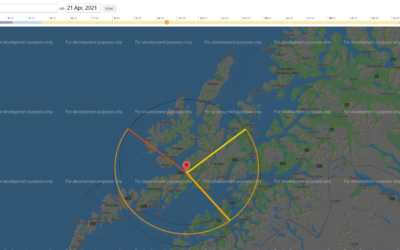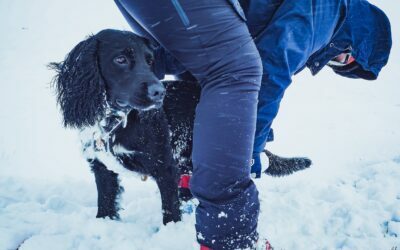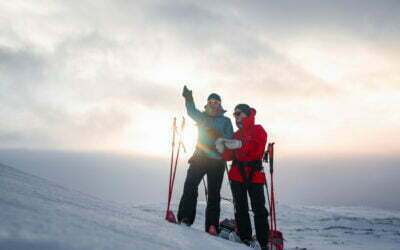1. Channel your inner Batman
When Batman meets the Joker in combat, he doesn’t panic. He assesses the situation. He grabs the right tools. Then he attacks – precisely. This is what’s called for in avalanche rescue. If someone in your party is taken by an avalanche, the situation will be chaotic and stressful. There’ll be a lot of shouting and screaming, likely some panic. This is where training helps: draw on instinct, a clear head, and a plan of action. Beginning a rescue without a plan can cause more problems than you might have anticipated. But a course will teach you how to perceive more danger signs, how not to put yourself in harm’s way, and to coordinate the resources of your tour party. You learn how to react calmly, and how to conduct the rescue with efficiency and accuracy. This is how to get the outcome you want.2. Overcome confusion and chaos
If two people are buried in the same locale, this can make the search for individual beacons really difficult. The number and direction on your receiver might jump around between the two transceiver signals. This can have fatal consequences – so do everything you can to avoid more snow-slides. Here, preventative measures are key. If the situation’s bad enough, there’s no guarantee you can save more than one person. It’s therefore vital to training in scenarios like this. A rescue course teaches how to distinguish between the signals and to prioritise, so that you can find your friends as quickly as possible – and save lives!3. Learn to use a search probe with surgical precision
Yes, you can just randomly jab your probe into the snow until you get a hit, but it’s hardly effective. Or you can do it methodically, increasing the likelihood of finding your friend. The sooner you get a precise hit, the sooner you can start digging. An avalanche course will teach you search techniques and effective methods developed by search and rescue experts.4. Learn to dig like a bulldozer
When an avalanche is in motion, friction warms the snow. When it stops, it quickly freezes and sets like concrete. This means it’s vital you’ve learned the most efficient digging technique. Digging is slow. It’s energy-expensive. Avalanche snow is a densely packed, solid mass. Ideally, you’ll be able to organise a digging team so that you can methodically dig your partners out as quickly as possible. But even digging requires knowledge. And knowledge has to be learned. In this case, on a course.5. Reach the unreachable
The longest probes on the market are 320 cm. There’s no more terrible feeling than discovering your probe isn’t long enough. You usually have a maximum of 15 minutes to dig someone out if their life is to be saved. So it’s important to know how to handle things when someone’s deeply buried. On an avalanche course, you’ll learn to avoid terrain traps and similarly dangerous situations – but you’ll also learn how to deal with the worst should it happen.6. Prepare for the unexpected
Of course, you and your friends have all the equipment and you know how to use it. But what if you witness an accident where the victim isn’t wearing a transceiver? Obviously this isn’t ideal – but that doesn’t mean you should throw up your arms in despair. Through education and training, you can learn techniques to find a buried skier without a beacon – don’t give up hope, and do your best with a difficult situation.7. Practice makes perfect
Search and rescue personnel, guides, ski patrols and professional skiers train their avalanche rescue skills every single season, repeatedly. When you’ve trained a little with different scenarios, you quickly learn that time and efficiency play a very big role in avalanche rescue. That it’s about making it instinctive, honing your technique, adding to your knowledge – so that when it really matters, you know what to do. If the pros take it this seriously, you probably should too.8. Become a lifesaver
Everything boils down, essentially, to one fundamental thing: being prepared for avalanche rescue lets us saves lives. If you’re unconvinced, check out the stories and video from the rescue in Cherry Bowl, Canada.
Digital tools for the ski tour
Don’t give up if your go-to spots are snowless or unskiable wastes. There could well be untouched, soft powder in them there hills! Read on to find digital tools for finding the white stuff when all hope is lost…

So – what exactly is a skin, anyway?
Skins are more than a strip of carpet with glue on the back. They’re tools designed to help us in pursuit of pristine snow, perfect lines, and/or solitude. Something this magical demands a proper description of how it’s made.

Learn first aid for dogs
Crister Næss, former Åsnes company stalwart, has several years experience as a dog handler in the Norwegian Armed Forces. For him, taking a first aid kit for the dog as is as natural as taking one for other humans.

The dog’s mountain code
Norwegian vets say that holiday periods mean more enquiries. The Åsnes Academy has excellent articles on care for your dog in the mountains, including first aid. Here, however, we’ve chosen to put together what we call “the dog’s mountain code” – with some very specific tips for things like the Easter holiday.

Learn to use a map and compass
If you need a little refresher in the use of a map and compass (or if you’ve never learned!) step this way. You’ll have it down in no time.

13 tips for better orienteering.
Few of us set out into the winter mountains when the weather’s bad and visibility’s poor. And we’re careful for good reason. It’s risky. When nature shows its muscles, it forces us to reflect. Even so, Norway’s a country with plenty of mountains and even more weather. If we only headed out when the sun was shining, the season would be very short. We head out when the weather’s less than perfect – which means we need to be able to find our way with a map and compass. Here are 13 tips for using a map and compass, then, for those of us hitting the mountains in winter.